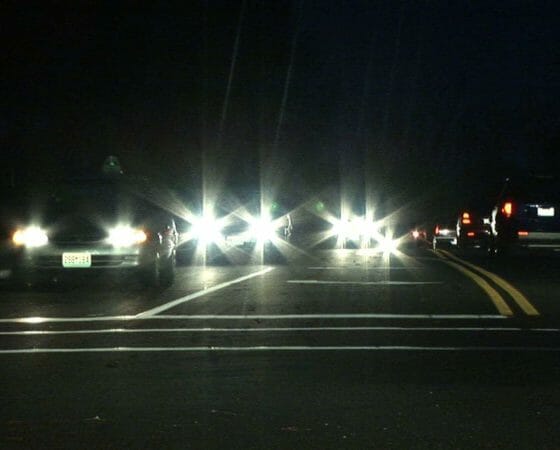Bring on the Night: Our Top Night Driving Tips

Most of us can’t stand driving at night. Night driving makes us insecure because we can’t see everything around us. It requires a huge increase in concentration. And no one likes getting blasted by an oncoming car’s high beams. But, beyond it being a nuisance, night driving is also considerably more dangerous than day driving.
Road fatalities are three times higher, even though only a quarter of all driving occurs at night. The reason for this is clear, we don’t see as well at night. Our peripheral vision, depth perception, and ability to discern colors are all affected. But, we all suffer with the necessity of night driving at some point. So here are some tips for driving at night and staying safe on the road.
1) Clean Your Windshield
Seriously, cleaning your windshield can make a huge difference in how well you can see what’s coming at you at night, especially when it’s raining. And make sure that you never touch the inside of your windshield with your bare hands. Your hands (even the backs of them) will leave behind oils that will streak and make night driving even harder. Use a commercial window cleaner or vinegar and use newsprint (like pro detailers do) to get everything off the inside of that windshield.
2) Make Sure Your Headlights Are Aimed Properly
Over time, road vibration, minor and major bumps in the road, and gravity can play havoc with the orientation of your headlights. Sometimes, cars right off the dealer’s lot will need headlight adjustments. Either get yours adjusted by a professional or carefully follow the instructions in your cars manual. Properly adjusted headlights can make a huge difference in how far and how well you can see down the road at night.
3) Use the Dimmer Switch
Your car came with a dash light dimmer switch for a reason. The rods and cones in your eye will adjust to the darkness around, but only so much as the interior light in your car will let them. Turn down your dash lights as much as possible and try not to use any other interior lights unless you are parked on the side of the road. The harder to see inside the car the easier it will be to see outside the car, and that’s typically where the danger is.
4) Follow the Stripe
Oncoming bright lights can play havoc with your eyes’ ability to adjust to low light levels. Every blast of an oncoming car’s headlights will require time to recover. But, you don’t want to look down or away and lose track of where the road is while you wait for an oncoming car to go by. Instead follow the outside stripe on your side of the road. This way you can remain on course and minimize the amount of damage done to your night vision by oncoming headlights at the same time.
5) Maintain Your Eye Health
Lastly, make sure that you take good care of your eyes. See an eye professional every one to two years, depending on your age, to make sure that you are seeing as well as possible and that your corrective lenses are up to date.
Night Driving Doesn’t Have to Be as Irritating
Follow the five tips we’ve laid out for you and night driving won’t have to be such a nuisance, or quite as dangerous. You may never love getting behind the wheel at night, which is probably a good thing, but you don’t have to hate it either.
[Photo via: Driversedguru]

